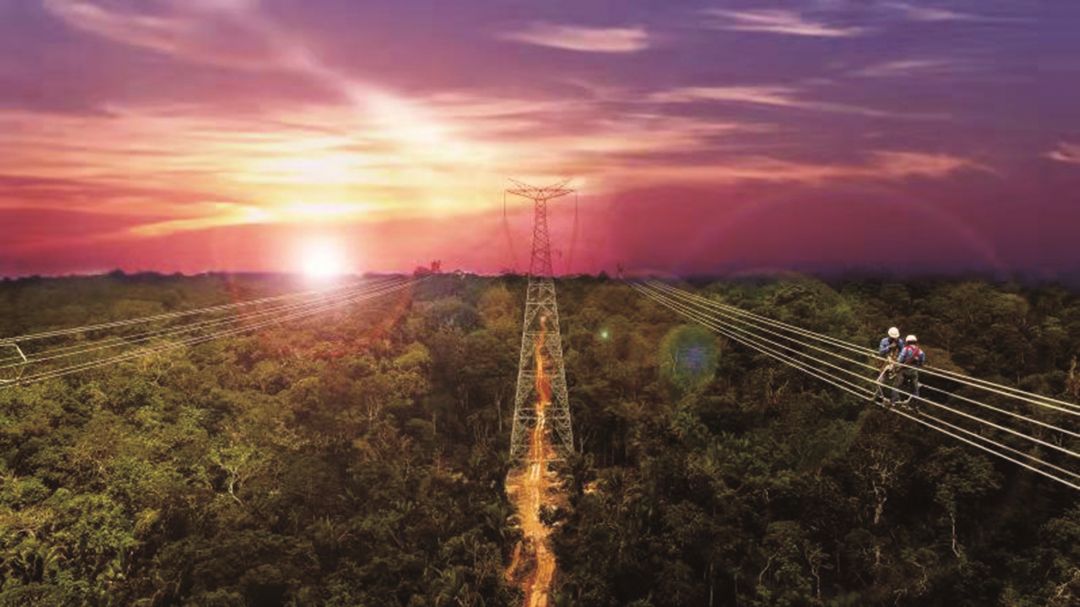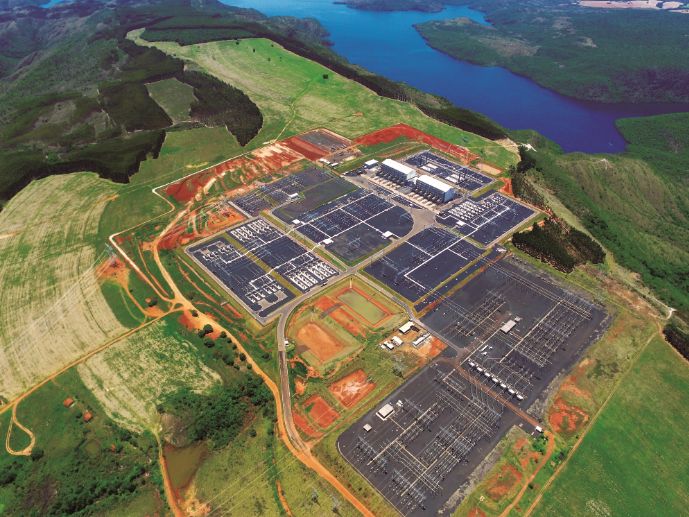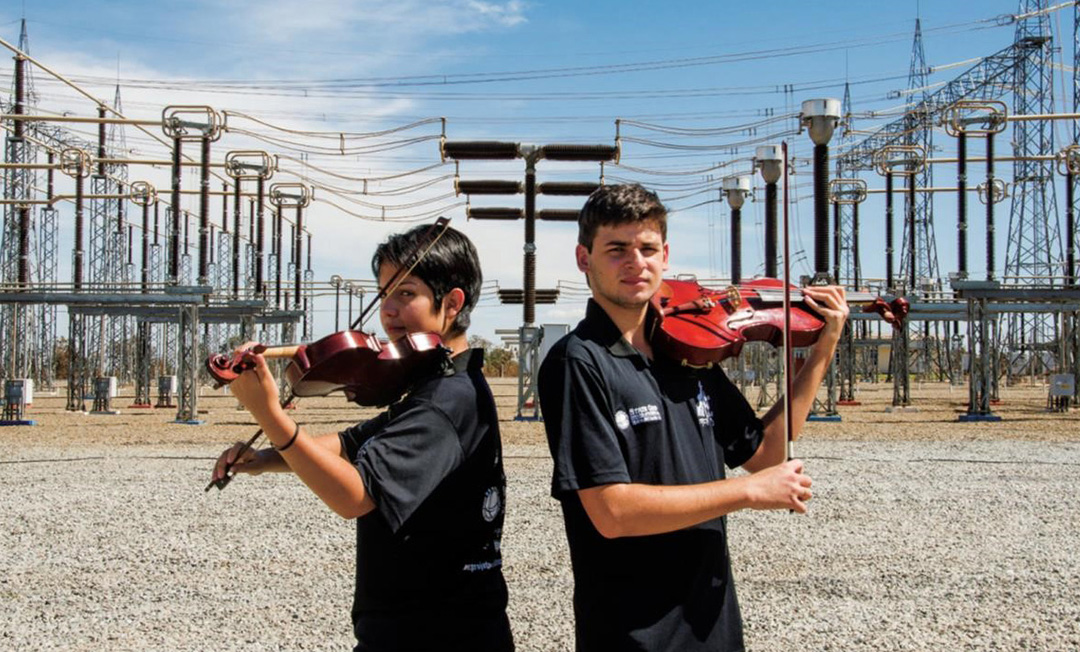The Belo Monte Cooperation
By Zhang Yuwen
[Brazil] Anselmo Leal
The Amazon, the largest river with the largest flow, the widest basin and the most tributaries in the world, runs almost across the north of the South American continent and nurtures the world’s largest tropical rainforest, known as the “Lungs of the Planet”.
The Amazon basin covers a vast area, mostly in northern Brazil, where there is adequate power supply with abundant water resources. However, the country’s “big consumer of electricity” is its southeast region, with a concentration of three-fourth of the population and more than half of Brazil’s industries. There is a great gap between the demand for electricity and production and supply of electricity in this region. With this disparity in supply and demand, the question was how to transmit power over 2,000 kilometers between the two regions.
North-South Power Diversion
For Brazil, the challenge was not the generation of electricity but its transmission over the long distance. It was a challenge for the Belo Monte hydropower station.

Workers high up on an ultra-high-voltage direct current line
The Belo Monte hydropower station is located on the Xingu River in the lower reaches of the Amazon. With an installed capacity of 11.23 million kilowatts (7 percent of Brazil’s total capacity) and an annual capacity of 40 billion kilowatt-hours, it is Brazil’s second largest hydropower station.
To transmit electricity from Belo Monte to the populous southeast, the line would have to cross 4 states, 66 cities, more than 200 rivers and more than 120 transmission lines already in operation. The project would be unprecedented in terms of scale, terrain, climate, environmental protection and complexity.
In addition, the rainy season in the Amazon basin is as long as half a year, making it more difficult to build, transport, construct and maintain the power transmission line.
China’s unique ultra-high-voltage (UHV) transmission technology was the perfect solution for Brazil’s need.
UHV power transmission would have its advantages in Brazil, a country similar to China in its vast territory and diverse terrain. In terms of efficiency, the UHV system has large transmission capacity with low power loss. In terms of cost, the unit cost of UHV transmission is low. In terms of environmental protection, UHV transmission is greener and safer.
A consortium of State Grid Corporation of China and Eletrobras of Brazil won the bid for the transmission project and the project kicked off.

A bird’s-eye view of the Estreito converter station of the project
As trucks made their way on the muddy roads, giant line towers stretched forward. The unstable weather, no matter whether it was sunny or rainy, did not interrupt the pace of construction.
The project advanced steadily with the technicians and workers with different specializations coordinating closely. After two years of hard work, Phase I of the Belo Monte ±800kV Ultra-High-Voltage Direct-Current (UHVDC) Project was completed ahead of schedule and put into commercial operation.
At present, the project is operating with a capacity of 4 million kilowatts. After a journey of more than 2,000 kilometers, electricity is transmitted to the southeast of Brazil to meet the needs of 20 million people, 10 percent of the country’s total population.
The introduction and application of UHV transmission technology helped Brazil in its major project North-South power diversion project. “The Belo Monte transmission project marks the beginning of Brazil as the first country in America that possesses the UHVDC technology,” commented Fernando Coelho, the then Brazilian Minister of Mines and Energy. “It not only improves the security, stability and power supply reliability of the Brazilian power grid, but also effectively eases the pressure of power shortage in the southeast region. What’s more, it has helped Brazil accumulate the experience of UHV transmission, and strengthened the idea of green energy development.”
Protecting Brazil’s Legacy
Brazil, sultry and humid throughout the year, is rich in natural resources with much of the land covered by luxuriant tropical rainforest. The scorching sunlight finds it difficult to penetrate the depths of the rainforest, the home of the indigenous people and wildlife.
To protect the environment, Brazil has very strict environmental protection laws. It is one of the countries with the most environmental laws and regulations, and all construction projects require the approval of the environmental enforcement agencies. They have to apply for permits for different phases of construction and pass environmental impact assessment.
As per the requirements, State Grid Brazil Holding, a subsidiary of State Grid Corporation of China, set up a Department of Environment and invited experts from different fields to carry out a comprehensive environmental assessment before the start of the Belo Monte project.
Julio is a biologist who participated in the environmental assessment. His job was to go deep into the Amazon rainforest and record changes in the natural environment and animal species along the line.

A scarlet macaw
“One day, I was standing under a big tree to make notes when a colorful baby scarlet macaw lost its balance and fell down near me,” he recalled. “The scarlet macaw is an endangered species in Brazil. I hadn’t seen this kind of parrot for a long time! Since the parrot was a chick, the parents were likely to be in the vicinity. I was extremely excited!”
Following the company’s environmental assessment requirements, Julio called the local environmental protection agency and handed over the young bird to the nearest rescue station.
During the construction of the project, the environmental assessment team conducted a detailed investigation in the rainforest and recorded 5,177 plant species and 448 animal species, including the ant bear and 11 other species identified by the Brazilian government as rare species and brought under protection.
In addition, the project team paid great attention to the protection of historical and cultural resources. They developed a detailed plan to systematically maintain the historical and archaeological heritage along the line.
In the process of construction, the design engineers often came across nature reserves and cultural reserves. To protect the valuable resources, they would bypass these areas even though it meant higher costs. The whole project involved the construction of 4,000 towers. The project team had to make sure that none of them would be built on archaeological sites.

An ant bear
“Look here, another archaeological site. It must be more than 500 years old!” exclaimed a technician at a tower construction site. From the different sizes of ceramic fragments found in different soil layers, a team of experts determined they were the relics of American Indians who lived in the area in the 16th century.
Under the guidance of experts, the project team adjusted the position of the original tower and ensured protective isolation of the construction area in accordance with regulations. The excavated metal, glass molds, ceramics, shells and other relics were handed over to the local institute of history and culture.
In the course of the project, experts conducted 4,003 archaeological surveys, finding 782 archaeological sites. They also strictly protected 188 important sites according to the requirements of the Brazilian authorities.
“The Belo Monte project has fulfilled its environmental protection obligations and carried out environmental investigations and studies, which is worthy of our respect!” remarked Claudia, technical director of environmental assessment of Brazil’s environmental protection agency IBAMA.
It is a common human mission to protect the environment and historical and cultural relics. It is not just a requirement a power transmission project has to fulfill to meet the environmental protection standards, but is closely related to the sustainable development of humanity.
Musicians from Slums
In the film City of God, the camera takes the audience to a slum in the southwest suburbs of Rio de Janeiro, Brazil. Although the film is an artistic creation, the life it depicts is still playing out in the slums of Maré today.
Da Silva lived in the slums as a boy. “Like all the kids here, I had no money, no education, no idea what my purpose of life was,” Silva said. “I felt that I would muddle along without any aim all my life.”

Statue of Christ the Redeemer on Corcovado Mountain in Rio de Janeiro
Things began to change when he joined the Tide of Tomorrow Maré Youth Philharmonic Orchestra. The founder of the orchestra wanted to change the lives of the children in the slums with music. However, without any income, the orchestra’s business had gone from bad to worse.
Da Silva and other members of the orchestra felt that the future that had just lit up was about to go dark again.
State Grid Brazil Holding came to know about the situation. They were moved by the orchestra’s plan to create “wonders with music” and decided to support it financially. “Without their support, the children’s fate might have been different,” the founder said.
With the support, the children could not only learn to play music, but also receive a monthly allowance. The orchestra signed an agreement with the municipal education authority to provide them with free basic education. With its financial and educational problems addressed, the Maré Youth Philharmonic Orchestra has grown rapidly.

Musicians of Tide of Tomorrow Maré Youth Philharmonic Orchestra
At a concert marking the 40th anniversary of China-Brazil diplomatic ties, the orchestra performed a traditional Chinese music composition, Scenery of Wuxi. The charming oriental melody echoed in the night sky of Rio for a long time. The children talked glowingly about their aspirations with the world.
A country prospers when its youth are strong. Music is a starting point, raising hope for the young people who will be the future builders of the country.
As dusk falls on Rio’s Corcovado Mountain, the city is illuminated by shimmering lights that trace the winding curves of the coast. Abundant electricity from the Belo Monte hydropower station is transmitted to Brazilian destinations with UHVDC technology.
Tide of Tomorrow’s beautiful music echoes in Rio’s night sky. It is a blessing for Brazil’s future development and a hymn of the friendship between China and Brazil for generations to come.
FOR MORE
Project Overview
The Belo Monte ±800kV UHVDC Project Phase I is the first large transmission project of the Belo Monte hydropower station. It begins in Pará state, passes Tocantins and Goiás and ends in the south of Minas Gerais state. The project consists of the construction of a 2,084-kilometer UHVDC transmission line, the 4-million-kilowatt Xingu converter station, the 3.85-million-kilowatt Estreito converter station, the ground rod at both ends and other auxiliary facilities.
It took a little more than two years from the beginning of construction to the official commercial operation of the project in December 2017, two months ahead of schedule.
It set a record for large-scale power transmission projects completed ahead of schedule, demonstrating “Chinese speed” and “Chinese quality”.
The safe and stable operation of the project supports the local economic and social development. A model of successful cooperation between State Grid Corporation of China and Eletrobras of Brazil, it is one of the bright spots in the international capacity cooperation between the two countries.


